|
| |||
| ||||||||||||
|
Welcome to China! China , a land of beauty and fascination, tempts curious travelers all over the world. She is a massive country, covering 6,000,000 square miles and spanning 60 longitudinal degrees. She has such an infinite variety of people, enchanting natural landscape, brilliant history, a culture that is among the most ancient in the world and fascinating destinations that a visitor can be almost as bewildered as he(or she) is bewitched.Here, we just give you some clues. More information is available at Chinese national tourism adimistraion. Beijing , the proud capital of modern China, holds the biggest collection of ancient sites and relics in whole China. Additionally, Beijing is determined to stay at the forefront of Chinese civilization. As the biggest city in China, Shanghai has had numerous name tags attached to it throughout the past century, like the "Paris of the Orient", the "Pearl of China" and so on. Shanghai as a international and modern city is enjoying unbelievable pace of development. |
|
Tian'an men Square Large enough to hold 1 million people, the 440,000-square-metre Tian'anmen Square in the center of Beijing is the world's largest city square, where sunrises and sunsets are observed solemnly with national flag hoisting and lowering ceremonies. Tian'an men Gate on the northern edge of the square sued to be the front gate of the Ming and Qing Imperial Palace. The rostrum atop the gate, where national leaders review mass rallies or gala celebrations on important occasions, is open to tourists. The Monument to the People's Heroes stands in the center of the square. Behind Zhengyang Gate to the south sprawls Mao Zedong Memorial Hall; to the east is the complex which houses the Museum of Chinese Revolution and the Museum of Chinese History. The Great hall of the People stands on the western side. The night scene of Tian'anmen Square is definitely a MUST for any visitor to Beijing. Former Imperial Palace
China's largest temple and altar are found in Temple of Heaven, part of a 273 hectare park in Chongwen District today. Built in 1420, it was where Ming and Qing monarchs prayed for good harvests. Major structures are hall of Prayer for good Harvest, Imperial Vault of Heaven, Circular Altar, and Abstinence Palace. UNESCO endorsed Temple of Heaven as a world cultural heritage site in December 1998. Beihai Park Beihai Park, situated to the northwest of Palace Museum, is a typical imperial garden dating back to more than 800 years ago. Buildings are clustered around the famed White Pagoda on Qionghua (Jasper Flower) Island on the lake in the park's bosom. The island provides a vantage point for observing the landscape of Beijing. Major attractions are Circular City, Painted Boat Studio, Studio of the Tranquil Heart, Nine-Dragon Screen Wall and Five-Dragon Pavilions. Great Wall
Summer Palace
Thirteen Ming Tombs
Yonghegong (Palace of Harmony and Peace) in Eastern District had been the mansion of Emperor Yongzheng during his days as the crown prince. After he ascended the throne he had it converted into a lamasery, which has remained as such to this day. Influences of Han, Manchurian, Mongolian and Tibetan architecture are palpable in this complex that consists of three finely crafted archways and five imposing halls laid out tastefully over an area of 66,400 square meters. Among the treasures in these halls is a 26-metre-tall statue of Maitreya (the Smiling Buddha), which is carved out of a single sandalwood trunk.
Hutong s are back alleys where old traditions remain very much alive and kicking. There are about 4,550 of them in Beijing, ubiquitous in these hutongs are quadrangle dwellings. Close by prince Gong's Mansion are some of Beijing's best-preserved hutongs. Touring these hutongs by the traditional pedicab is a special travel program of Beijing. MORE INFRO AT Beijing Municipal Bureau of Tourism
 Top Top |
||
|
Huangpu River Cruise
The Oriental pearl TV Tower
Longhua Temple
MORE INFRO AT Shanghai Municipal Bureau of Tourism
 Top Top |
||
|
|
Last Modified: August 31,
2005 |
Email to us
|
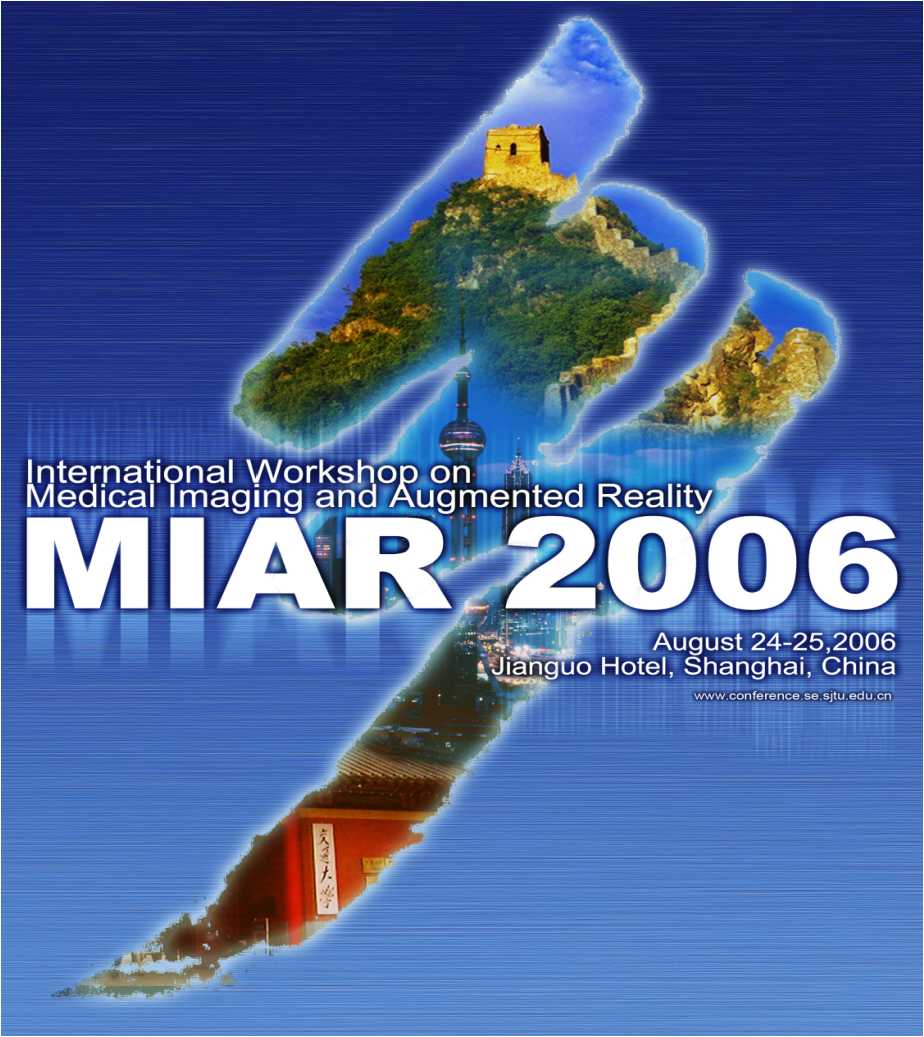

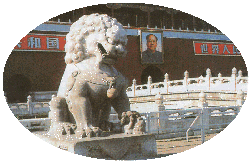
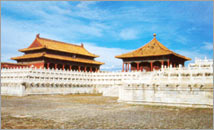 The
720,000-square-metre Palace Mueum, better known as "Forbidden City",
was the imperial palace for the Ming and Qing. Built during the
1406-1420 period, it is the largest royal palatial complex in
existence in China; ranging from the majestic to the exquisite, they
bear witness to a nation in transition. Other tourist attractions on
the premises include a huge stone ramp carved with intricate dragon
and cloud patterns, Imperial Garden and Nine-Dragon Screen Wall. An
immense trove of cultural artifacts and treasures of various
dynasties, some of them on display in the Treasure Hall and the
ceramics, painting, bronze ware galleries, are reason enough for
UNESCO to adopt the Former Imperial Palace as a world cultural
heritage site.
The
720,000-square-metre Palace Mueum, better known as "Forbidden City",
was the imperial palace for the Ming and Qing. Built during the
1406-1420 period, it is the largest royal palatial complex in
existence in China; ranging from the majestic to the exquisite, they
bear witness to a nation in transition. Other tourist attractions on
the premises include a huge stone ramp carved with intricate dragon
and cloud patterns, Imperial Garden and Nine-Dragon Screen Wall. An
immense trove of cultural artifacts and treasures of various
dynasties, some of them on display in the Treasure Hall and the
ceramics, painting, bronze ware galleries, are reason enough for
UNESCO to adopt the Former Imperial Palace as a world cultural
heritage site.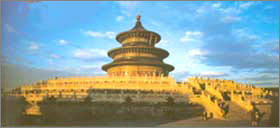 Temple of Heaven
Temple of Heaven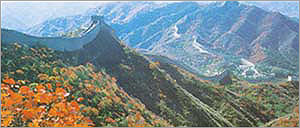 As an emblem of Chinese civilization, a
cultural phenomenon of world caliber, and another UNESCO=endorsed
world cultural heritage site, the 6350km Great Wall was in China's
feudal years a mammoth defense bulwark that serpentines its way
across mountains and valleys in the northern part of the country.
The Great Wall came under construction in the 7th century BC. But it
was Qinshihuang, the founding emperor of the Qin, who brought it to
completion. Repeated extensions were done in later dynasties until
the Ming. The 600-year-old Badaling Fortification in Yanqing county
in northwest Beijing is representative of Ming sections of the Great
Wall. The Great Wall looks equally breathtaking at such sections as
Jinshanling, Mutianyu and Simatai.
As an emblem of Chinese civilization, a
cultural phenomenon of world caliber, and another UNESCO=endorsed
world cultural heritage site, the 6350km Great Wall was in China's
feudal years a mammoth defense bulwark that serpentines its way
across mountains and valleys in the northern part of the country.
The Great Wall came under construction in the 7th century BC. But it
was Qinshihuang, the founding emperor of the Qin, who brought it to
completion. Repeated extensions were done in later dynasties until
the Ming. The 600-year-old Badaling Fortification in Yanqing county
in northwest Beijing is representative of Ming sections of the Great
Wall. The Great Wall looks equally breathtaking at such sections as
Jinshanling, Mutianyu and Simatai.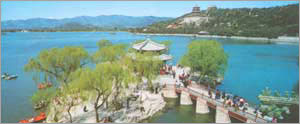 The Summer Palace (Yiheyuan) in the
northwestern suburb of Beijing was built in 1750. by far the
best-preserved imperial garden in China, it was endorsed by the
UNESCO in 1998 as a world cultural heritage site. As a paragon of
Chinese gardens, this huge garden includes Longevity Hill, whose
beauty is set off by a multitude of halls, kiosks and trees, and
Kunming Lake, a huge body of liquid silver. Major tourist
attractions are Tower of Buddhist Incense, 17-Span Bridge, Long
Gallery, Cloud Dispelling Hall, Marble Boat, Beamless Hall, Garden
of Harmonious Delights, the theatre in the Garden of Moral Harmony,
and Suzhou Street. The entire place is a de facto museum of China's
classical architecture. Housed in these buildings are an immense
collection of treasures and cultural artifacts.
The Summer Palace (Yiheyuan) in the
northwestern suburb of Beijing was built in 1750. by far the
best-preserved imperial garden in China, it was endorsed by the
UNESCO in 1998 as a world cultural heritage site. As a paragon of
Chinese gardens, this huge garden includes Longevity Hill, whose
beauty is set off by a multitude of halls, kiosks and trees, and
Kunming Lake, a huge body of liquid silver. Major tourist
attractions are Tower of Buddhist Incense, 17-Span Bridge, Long
Gallery, Cloud Dispelling Hall, Marble Boat, Beamless Hall, Garden
of Harmonious Delights, the theatre in the Garden of Moral Harmony,
and Suzhou Street. The entire place is a de facto museum of China's
classical architecture. Housed in these buildings are an immense
collection of treasures and cultural artifacts. The Ming Tombs are scattered over an area
40km in circumference in Changping County. Thirteen Ming emperors
who ruled China after they moved the capital from Nanjing to Beijing
were buried there. The largest is the Changling, built in 1413 for
the remains for Zhu Di or Emperor Chengzu. Burial objects are on
display from the underground palace of the Dingling, the tomb of the
last Ming emperor, Zhu Yijun, and his two empresses. The Holy Way
leading to the Ming Tombs is flanked on both sides by 30-odd men and
horses and other animals carved in graphic images out of massive
boulders. In terms of size, this group of stone sculptures is rare
anywhere in China.
The Ming Tombs are scattered over an area
40km in circumference in Changping County. Thirteen Ming emperors
who ruled China after they moved the capital from Nanjing to Beijing
were buried there. The largest is the Changling, built in 1413 for
the remains for Zhu Di or Emperor Chengzu. Burial objects are on
display from the underground palace of the Dingling, the tomb of the
last Ming emperor, Zhu Yijun, and his two empresses. The Holy Way
leading to the Ming Tombs is flanked on both sides by 30-odd men and
horses and other animals carved in graphic images out of massive
boulders. In terms of size, this group of stone sculptures is rare
anywhere in China.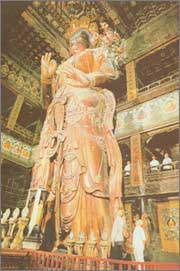 Yonghegong
Lamasery
Yonghegong
Lamasery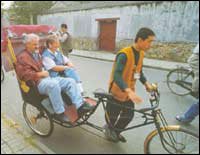 Tour of Hutongs
Tour of Hutongs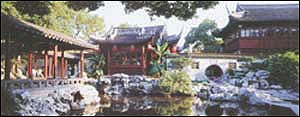 The Yuyuan Garden on the road of the same name in
downtown is perhaps the best example of classical gardens of
Shanghai. Built in 1559, or the 38th year of the Jiaqing reign of
the Ming, the garden is laid out in an intricate manner, with
buildings out in an intricate manner, with buildings spaced
providently and courtyards mutually containing, and all the
components of the complex zare cunningly grouped to camouflage a
rather camped space. As a paragon of the south Chinese landscaping
style of the Ming and Qing dynasties, it is a MUST for all visitors
to Shanghai. The neighboring Yuyuan Bazaar, known among old-timers
as "Old City God's Temple Market", is a rising tourist and shopping
center where visitors loitering among a cluster of shops,
restaurants and recreation facilities invariably find themselves
making a tour of discovery of local folklore and Ming and Qing
architecture.
The Yuyuan Garden on the road of the same name in
downtown is perhaps the best example of classical gardens of
Shanghai. Built in 1559, or the 38th year of the Jiaqing reign of
the Ming, the garden is laid out in an intricate manner, with
buildings out in an intricate manner, with buildings spaced
providently and courtyards mutually containing, and all the
components of the complex zare cunningly grouped to camouflage a
rather camped space. As a paragon of the south Chinese landscaping
style of the Ming and Qing dynasties, it is a MUST for all visitors
to Shanghai. The neighboring Yuyuan Bazaar, known among old-timers
as "Old City God's Temple Market", is a rising tourist and shopping
center where visitors loitering among a cluster of shops,
restaurants and recreation facilities invariably find themselves
making a tour of discovery of local folklore and Ming and Qing
architecture. 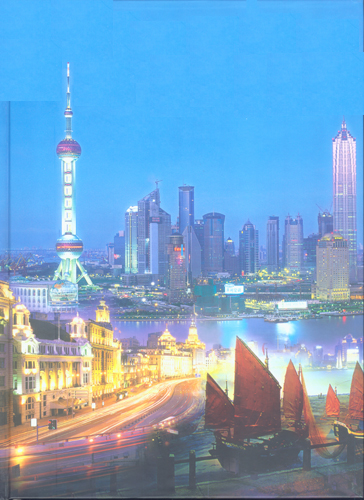 The Bund
The Bund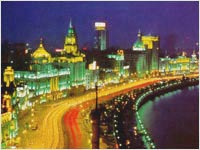
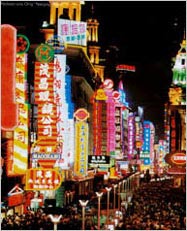 "Pedestrians Only" Nanjing Road
"Pedestrians Only" Nanjing Road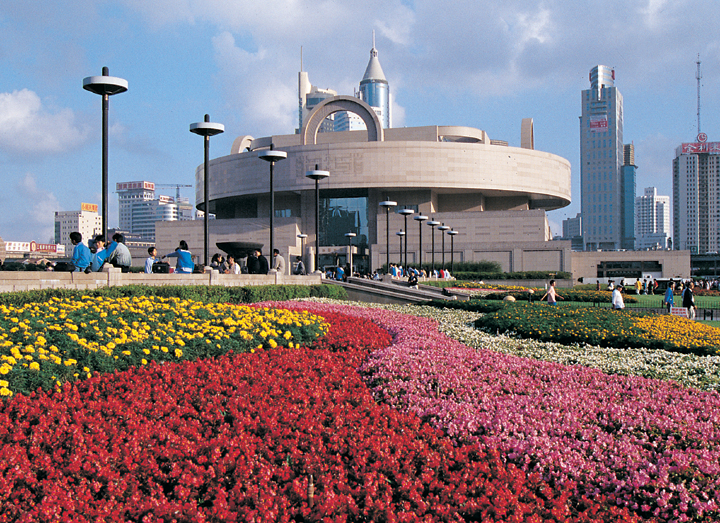 People's Square
People's Square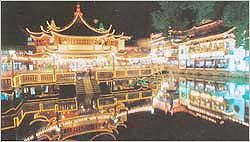 Temple of Jade
Buddha
Temple of Jade
Buddha